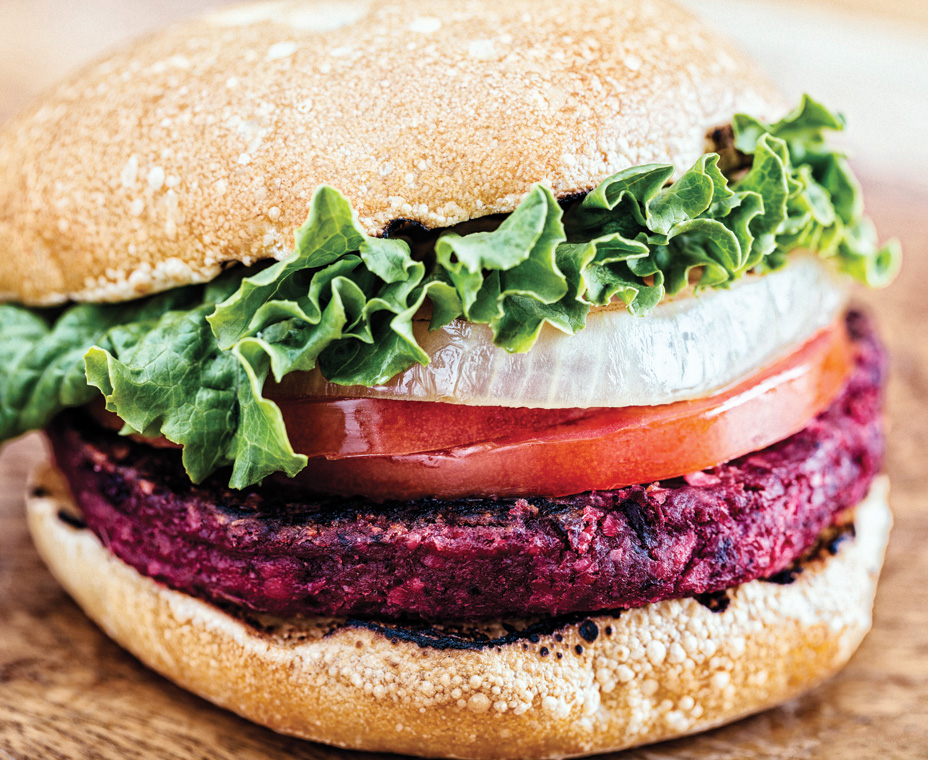If their success as a menu item at health-focused restaurants is any indication, ancient grains are here to stay. Although, to be fair, many of these foods have been cultivated for thousands of years, so they’ve been “here” for a while.
In fact, market research suggests that ancient-grain usage in quick-service and fast-casual restaurants is on the rise. Foods like quinoa, chia seeds, bulgur, and farro are increasingly present in bowls, smoothies, and veggie burgers.
The Plant Cafe Organic, a California-based concept sourcing local, organic ingredients, has plenty of menu favorites featuring ancient grains, such as Dino Kale Salad with red quinoa and a bright purple Plant Burger, which includes wheat bulgur (along with beets) in its blend. Perri Kramer, marketing director of The Plant Cafe Organic, says ancient grains make up a broad category of “almost every single grain variety” except for those that have been popular in the U.S. for the last 50 or so years.
“Far from being solely a health fad, ancient grains are sure to be a highly used ingredient in restaurants—and not just health-focused concepts,” Kramer says. “With the increased interest in international foods, more people are interested in trying and enjoying grains that people all over the world consume as basic parts of their diet. Ancient grains have a much greater range and subtlety of flavor, as well, which is an added benefit to both chefs and consumers.”
According to Mintel, products marketed as superfoods are on the rise in general, and within that category, “super grains” (arguably all ancient grains) are a growing portion. Mintel’s global food and drink analyst Jenny Zegler says ancient grains and “ancient” recipes are going to be a dependable source of inspiration for more menu items in 2017.
Common domestic crops like corn, rice, and wheat have come under scrutiny in recent years, with critics citing little or no nutritional value. Alternatively, many ancient grains are often packed with protein and essential vitamins. Coupled with concerns over genetically modified foods and gluten, some customers are edging toward healthier, more sustainable, and even vegan/vegetarian lifestyles—all of which create an environment ripe for ancient grains.
Although ancient grains can be a catchall for seeds (chia, quinoa) or cereals (sorghum, barley), most do deserve the “ancient” label. Their histories trace far back to early civilizations around the world. Quinoa was first cultivated in the Andes Mountains between 3,000 and 4,000 years ago. Farro originated in the Fertile Crescent before it became a staple food of the Roman legion and, later, Italians. Millet even appears in Chinese mythology and has been a staple of India for millennia.
Mintel research also finds that more operators are adding ancient grains on their menus as these foods fit into many niche diets. Ancient grains can pass most litmus tests, whether consumers are seeking plant-based proteins, gluten-free options, or more fibrous foods.
Bowls, often featuring a mix of veggies and proteins, have become a popular delivery vehicle for ancient grains at fast-casual and quick-service restaurants.
Peder Bondhus is the brand chef for Flower Child, a West Coast fast casual within the portfolio of famed restaurateur Sam Fox. He says the health-focused concept’s ancient grains menu items have had massive success.
The Mother Earth bowl with a super-grain mix—quinoa, barley, and farro—paired with veggies like roasted sweet potatoes, grilled portobellos, and avocados, has become one of their most popular menu items. Some even ask for just the supergrain mix as a side.
Bondhus thinks ancient grains have staying power, especially since they don’t exclusively cater to vegetarians and vegans. “We can add steak or chicken or tofu to any of these dishes. For example, in California you see more people add tofu, and in Texas they add more steak.”
In fact, customers like the Mother Earth bowl so much that Bondhus thinks it’ll be a permanent fixture of Flower Child’s menu.
Ancient grains are also a perfect fit in the ever-growing world of fast casual 2.0, since many of those restaurants focus on healthy, unique ingredients. St. Louis–based Porano Pasta recently added farro to the selection of base pastas for its signature bowls. Farro has become a popular alternative to rice, pasta, and kale.
“About 22 percent of total bowl sales are a base other than pasta, and about 25 percent of those are farro,” says Porano Pasta corporate executive chef Michael Petres. “We let people mix it up however they want, and lots of people add farro to salads as well, which doesn’t figure into those numbers.”
Petres adds that people appear to be choosing farro for its apparent healthiness, and he’s also a fan, citing farro and other ancient grains as “honest ingredients.”
Grains like farro can also adapt to different flavor profiles. For example, farro bowls at Porano Pasta can be paired with toppings from crispy garlic and pecorino cheese toppings to pumpkin seed pesto and creamy anchovy dressing. Petres says one of the most popular combinations comprises farro, spicy tofu, green olives, and sweet red peppers with a red pepper sauce.
Petres and Flower Child’s Bodhus both say ancient grains are typically affordable ingredients, although that may change as mainstays like quinoa become more popular. But given the sheer number of options, Bodhus predicts a “new” ancient grain will always be ready to take the spotlight.
“That’s why we’ll always look for the next [ancient grain] that isn’t being used as much,” Bodhus says.
This story originally appeared in QSR’s February 2017 issue with the title “Ancient Makes Grains.”





